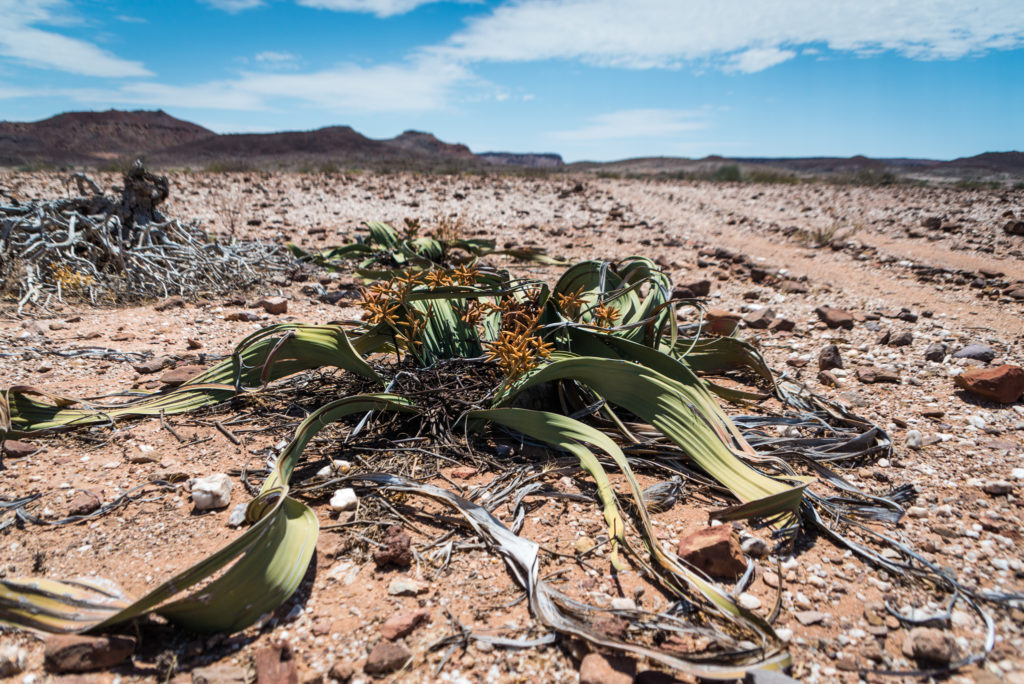
In 1859, the Austrian physician and passionate botanic Friedrich Welwitsch travelled to the then Portuguese colony Angola, where he came across a large, marvelous plant he had never seen before. He was amazed.
“I could do nothing but kneel down and gaze at it, half in fear lest a touch should prove it a figment of the imagination,” he wrote to Joseph Dalton Hooker of the Botanic Garden in Kew, England, in a letter accompanying a specimen. Hooker, upon seeing the plant, said the following:
“It is undoubtedly the most wonderful plant ever brought to this country, and one of the ugliest.”
And, since he was in a position to name things, he named it after its discoverer: Welwetschia Mirabilis.
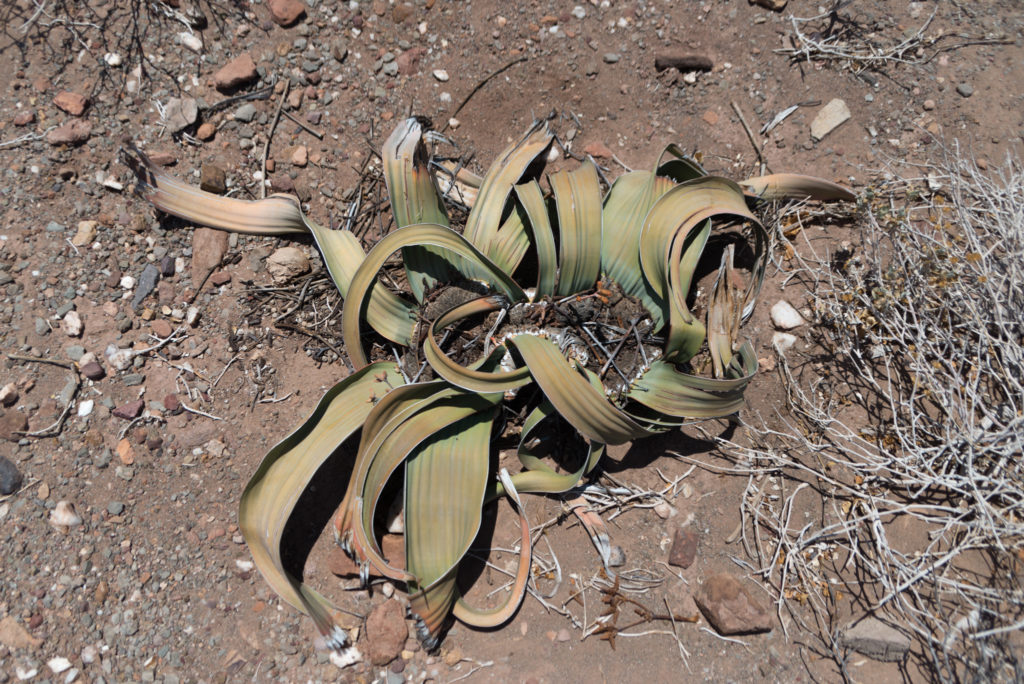
For all we know, the Welwetschia itself could not care less about any names. Before Hooker, the locals called it n’tumbo, just “stump”. The Hereros in neighboring Namibia called it onyanga, “the desert onion”, then baked and ate it. So Weletschia Mirabilis is not the worst of all names. In Afrikaans the plant is called Tweeblaarkanniedood, which is the least inspired but most descriptive name of all: Two leaves, cannot die. For a Welwetschia really grows only two leaves, and lives up to 2000 years. From a human point of view, it is practically immortal.
Welwetschias were around 65 million years ago already. They survived ice age. They outlived fires and pests, they watched insects come and go, and viruses, parasites, animals, humans, roads and wars. If you ever come across a Welwetschia, honor the moment. You are looking into eternity.
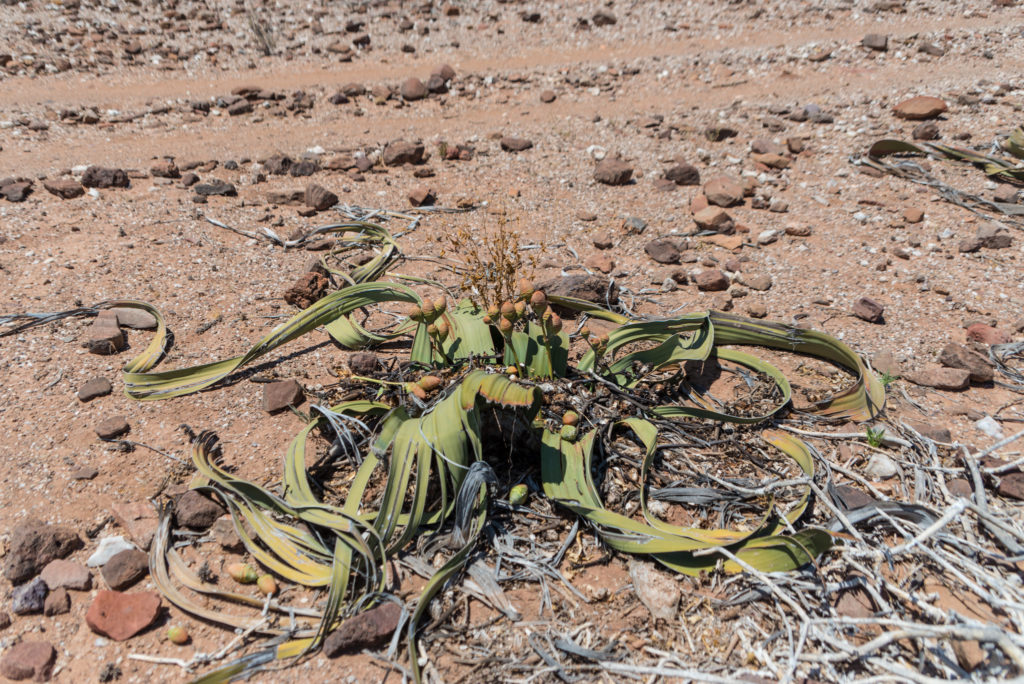
Other than the rare specimen sent to England, the Welwetschia is endemic to Angola and Namibia, to most arid land. Welwetschias make ends meet with as little water as possible by sprouting deep taproots into the sand below. They grow slowly, with both leaves pushing out like dark green tentacles up to four meters long, their ends curled up and frizzled out. Like human hair, uncut and uncombed. Indeed, the Welwetschia Mirabilis is not a beauty. It is, however, a tree. Its very short trunk also likes to split into several lobes, which makes the Welwetschia look like flotsam, a giant starfish stranded on the beach. Only the beach is not a beach, but the dry Namib desert.
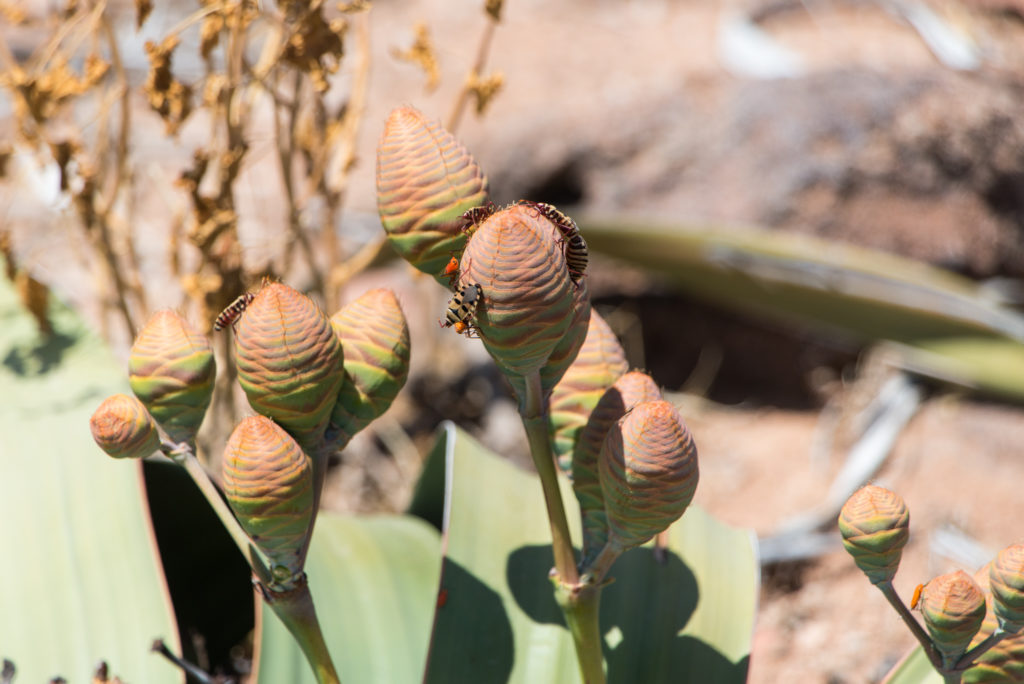
Like humans, Welwetschias are dioecious, with separate male and female plants. Fertilization is up to insects, flies and bugs. But the real specialist in Welwetschia Sex Life is the Odontopus sexpunctatus. Nomen es omen, you might think, but the bug was really named for the six dots on its back. (Not by Hooker, though).
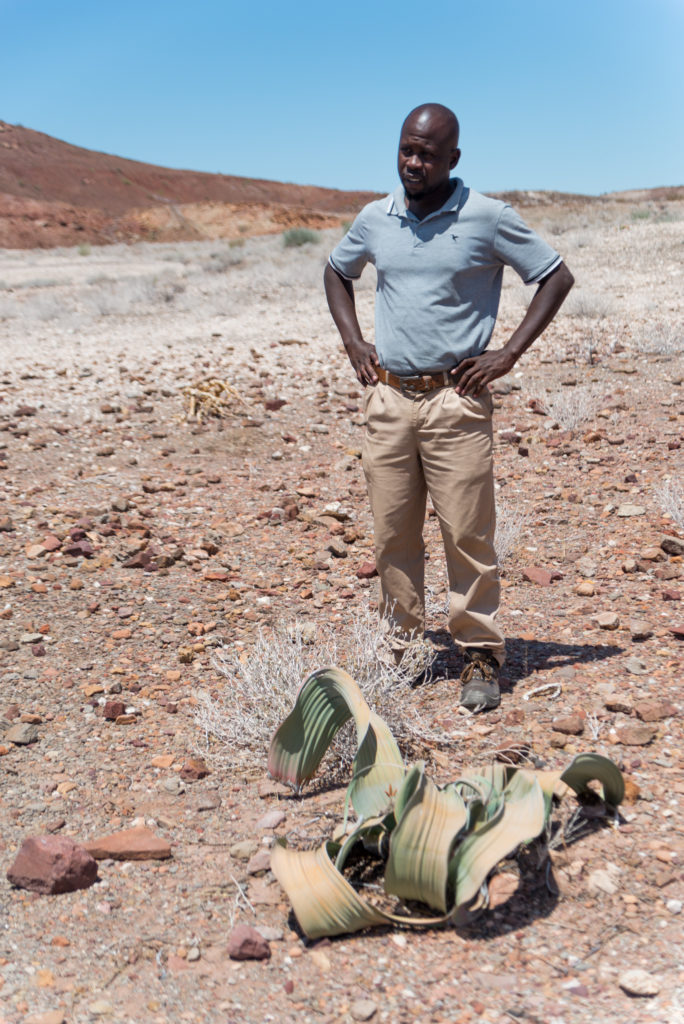
Dandago led me through his native land, Damaraland in North Western Namibia. The Damara people has lived in the Namib desert for thousands of years, long before the Hereros, the Portuguese, or the Germans came. They call the Welwetschia Nyanka. But don’t even try to say that loud. The language of the Damaras knows four different click sounds – unpronounceable for anyone not born a Damara – twisting the tongue like Welwetschia leaves.
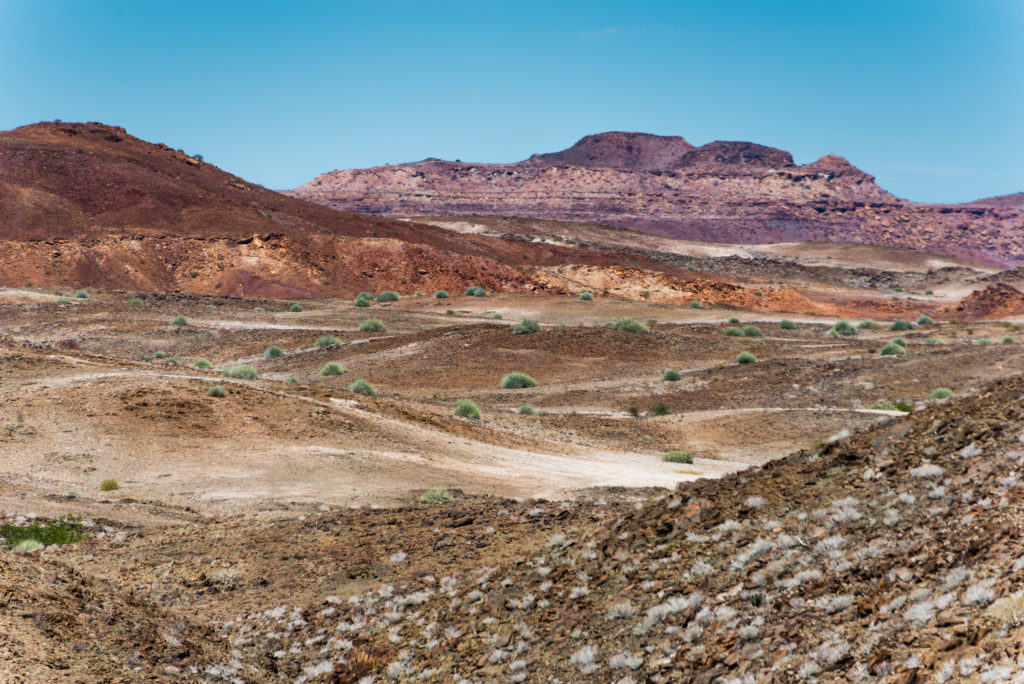
Damaraland is of captivating beauty. A vast, ragged land, where wild animals like elephants, giraffes, rhinos and zebras still roam freely. It hasn’t rained in four years, however, and the animals, and the Damaras themselves face hard living conditions. The Welwetschias will live on. For unlike us humans, they cannot die.
